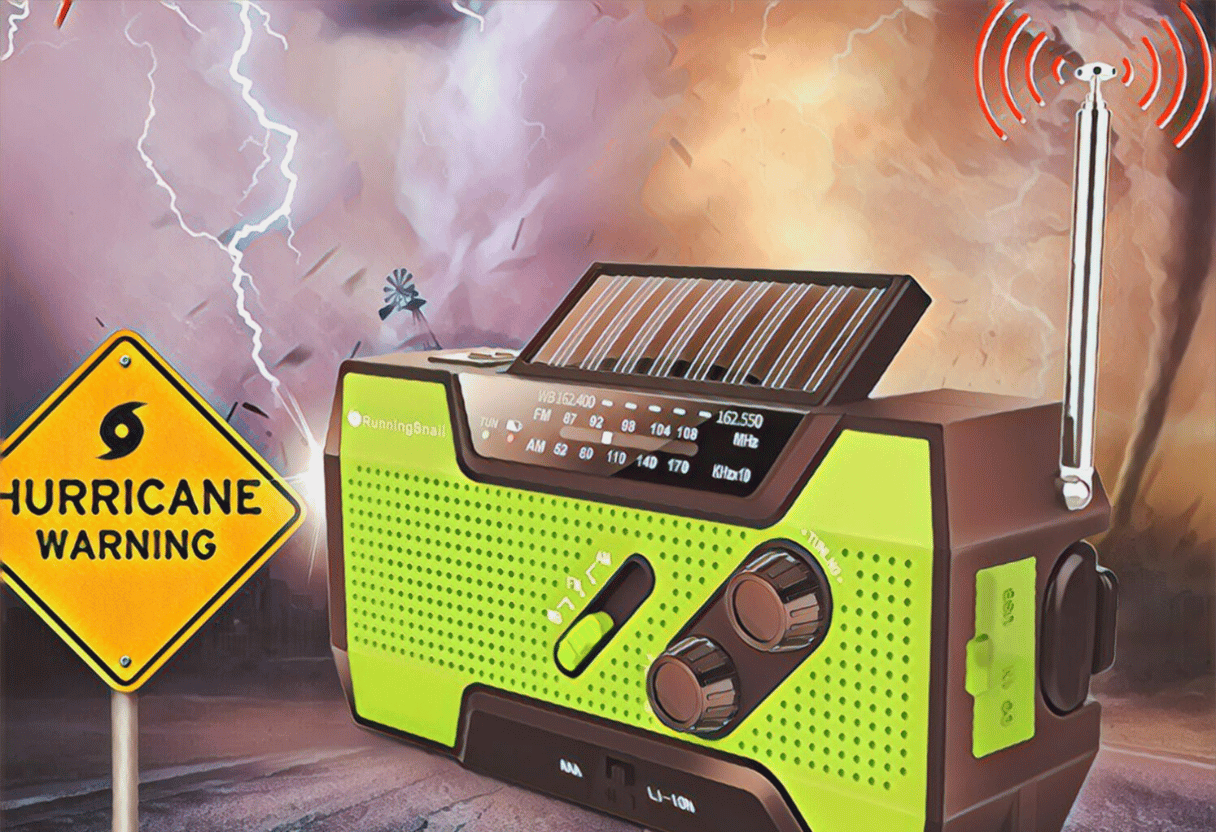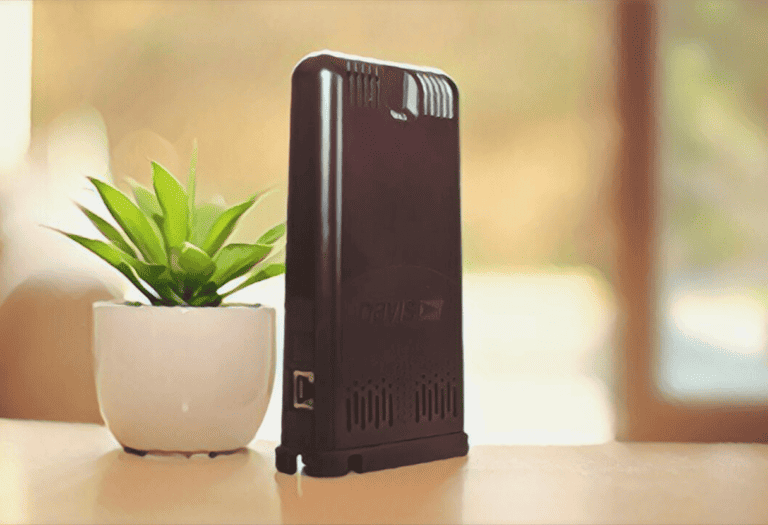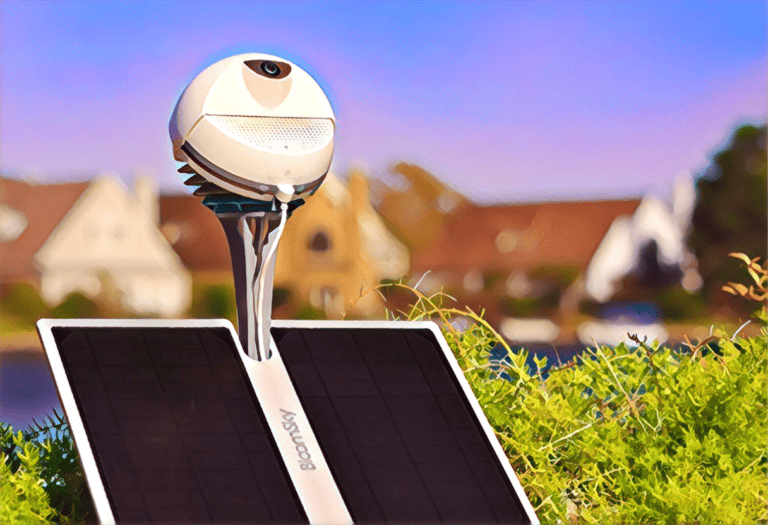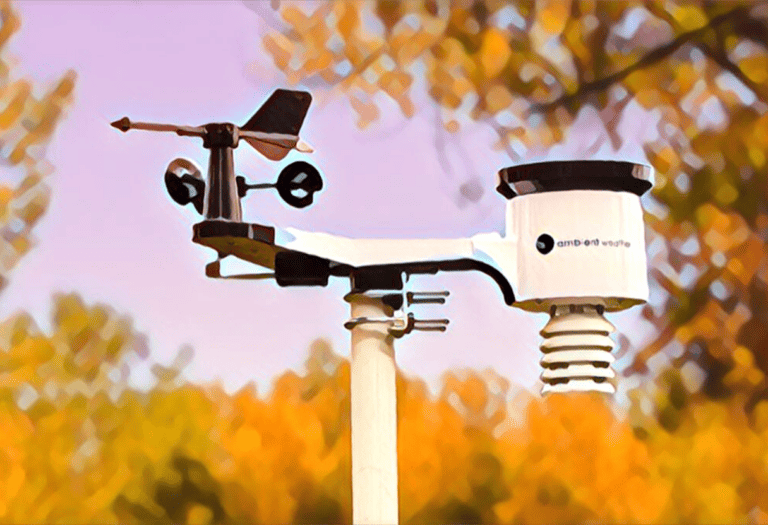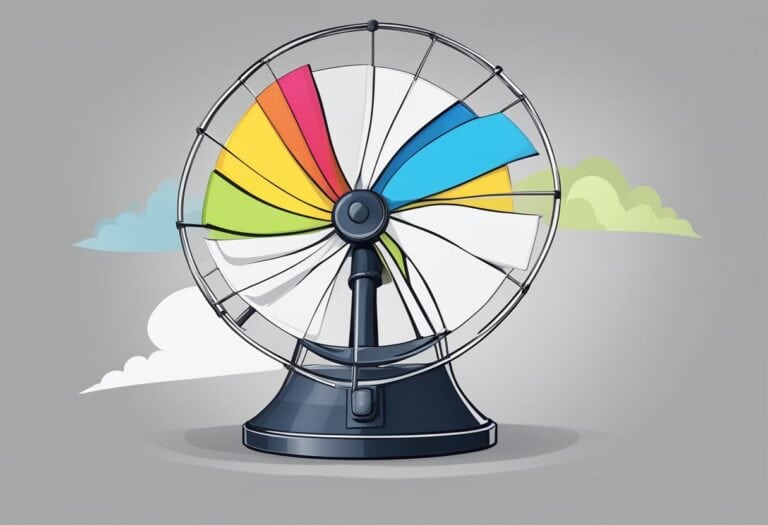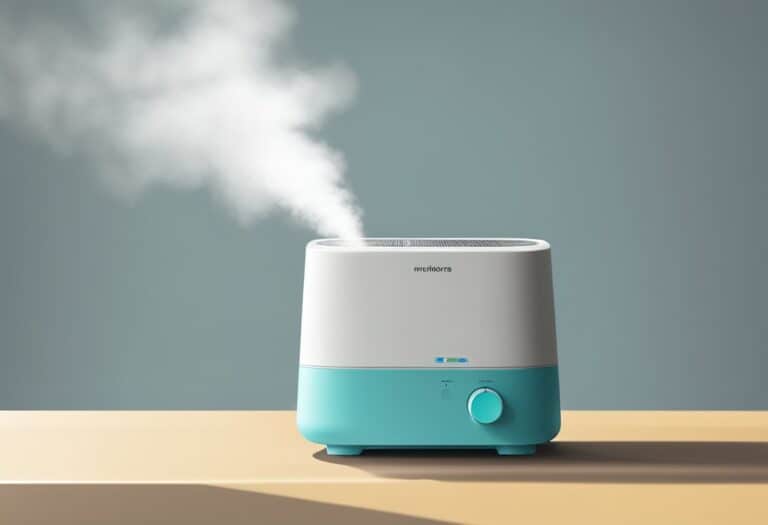Are you wondering how an emergency weather radio can be a game-changer in your disaster preparedness kit for 2024?
When the unexpected strikes, from hurricanes to blizzards, staying informed is key to your safety. An emergency weather radio isn’t just another gadget; it’s a vital lifeline that provides real-time updates and critical information, ensuring you’re always one step ahead of the storm.
Well, we’ll be going over:
- What makes a weather radio indispensable during emergencies, and how does it ensure your access to crucial updates?
- How do the top emergency weather radios of 2024 compare in terms of reliability, signal clarity, and additional life-saving features?
- In what ways can the added functionalities of modern weather radios, like hand cranks and solar panels, provide reassurance in times of crisis?
With the right emergency weather radio in hand, you’re not just prepared; you’re protected.
Let’s dive in.
Top Emergency Weather Radios
- Eton Emergency NOAA Radio – Top Pick
- Kaito Voyager
- Raynic Emergency Weather Radio
- TFTDOUP Emergency Radio
- Yestiwc Weather Radio
I’ve meticulously researched and vetted a selection of emergency weather radios to ensure you’re prepared for any situation where severe weather threatens your safety. My focus was on reliability, features, and user feedback, ensuring you have access to the most trustworthy and functional devices available. Whether you’re planning for unexpected natural disasters or just want peace of mind during outdoor adventures, the following radios are well-equipped to keep you informed and connected.
Eton Emergency NOAA Radio
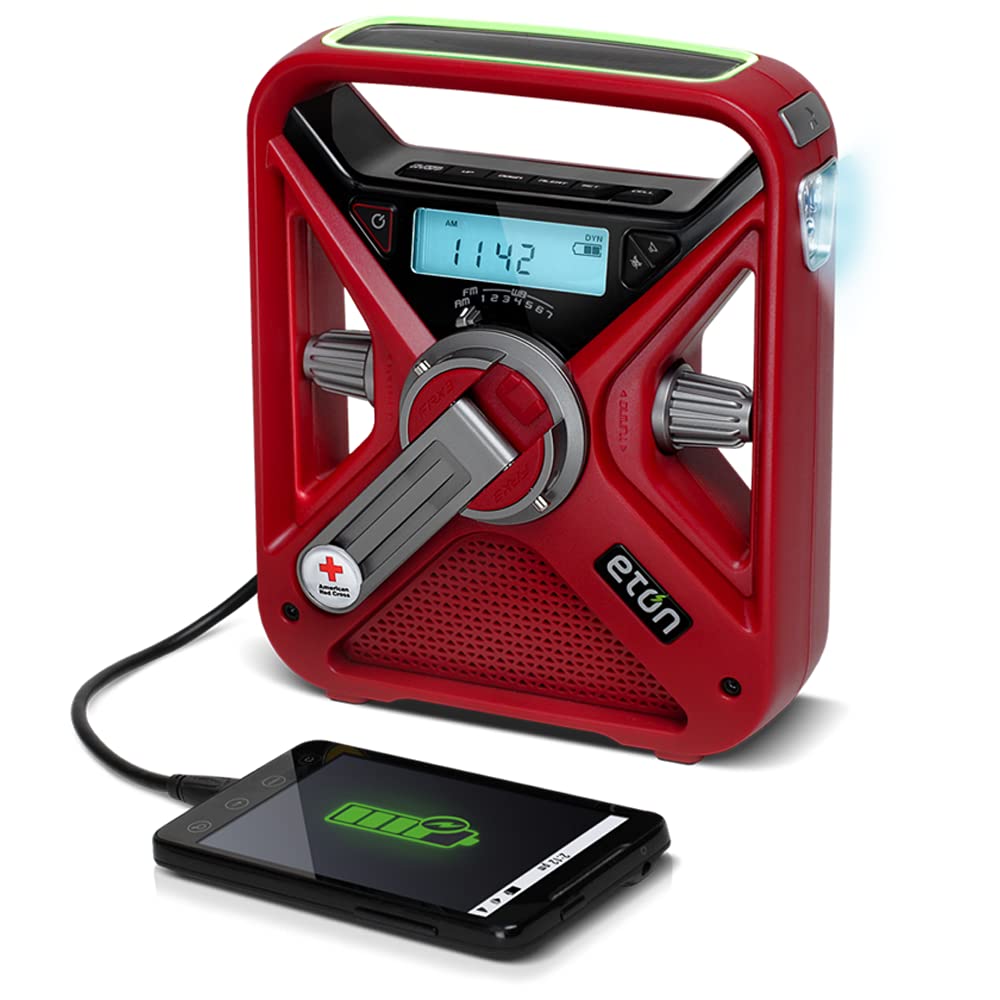
I found this radio to be an essential gadget for emergency preparedness, with its reliable features and ease of use.
Pros
Cons
Hauling out the Eton Emergency NOAA Radio for the first time, I immediately noticed its solid construction and the thought that has gone into its design. Setting it up was straightforward; the digital display was a breeze to read, and tuning into various stations was simpler than with many other radios I’ve used. The sound came through crisply, with no static, which is critical during a crisis when every second counts.
Out on a camping trip, the radio’s hand crank turned out to be a saving grace when my phone’s battery dipped into the red zone. A few minutes of cranking was all it took to get enough juice to make an important call. The solar charging feature was equally impressive, keeping the radio powered and functional whilst I enjoyed the peace of the great outdoors.
In my living room during a simulated blackout, the LED flashlight and flashing beacon also proved their worth, lighting up a dark room effectively. It’s small touches like these that assure me I can rely on the Eton radio in various emergency scenarios. I appreciate how versatile this gadget is, offering reassurance and utility beyond merely tuning into weather alerts.
Kaito Voyager
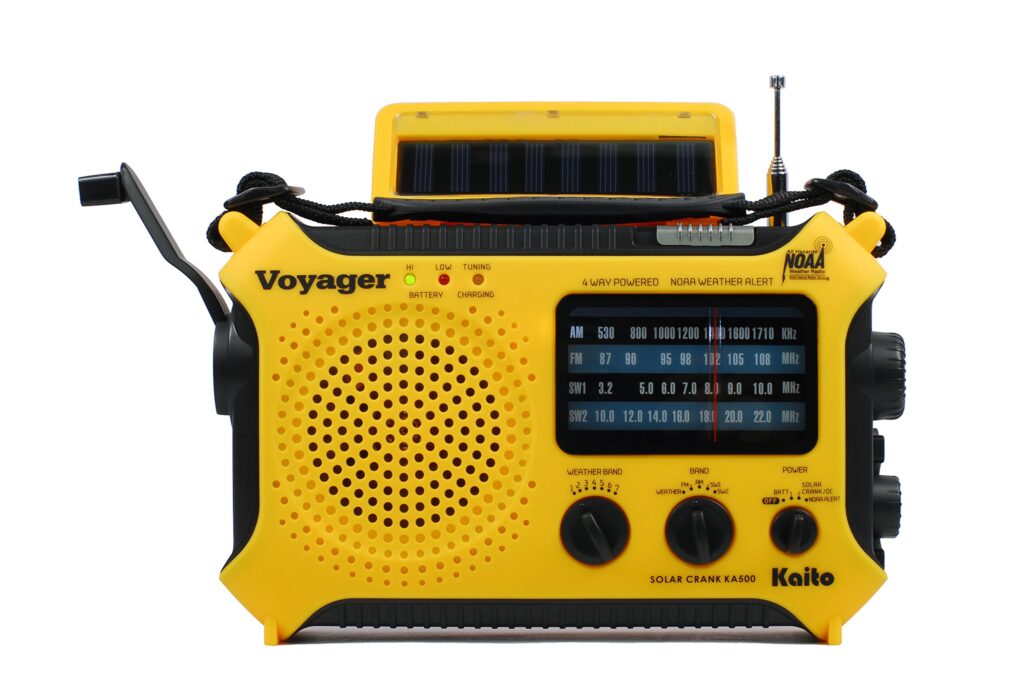
After hands-on testing and experiencing its suite of features in various conditions, I recommend the Kaito Voyager for anyone in need of a reliable emergency radio.
Pros
Cons
As soon as I got the Kaito Voyager, I was eager to put its multi-power capabilities to the test. Whether I was cranking the handle or letting it bask in the sun, I found it fairly simple to keep it powered up, though solar charging took noticeably longer. Regardless, it’s comforting to know that even without power, I can stay connected.
The array of available stations impressed me. Finding my local NOAA station came easily, and the sound quality was surprisingly clear. It made me feel secure knowing that I could access vital weather alerts or listen to AM/FM broadcasts if my power went out.
The construction of the Kaito Voyager speaks to its intent as an emergency tool. It feels robust in hand, and the additional features like the LED flashlight and reading lamp are more than just afterthoughts. They’re quite bright, something I appreciated during a blackout. However, I did notice the antenna could feel a bit delicate when fully extended.
This radio strikes a good balance between functionality and dependability, which is exactly what I need in an emergency tool. Just feeling the weight and texture of its water-resistant body gives me confidence that it will endure rough conditions. Sure, the solar charging aspect isn’t perfect, and the battery longevity is something to be aware of, but would I rely on this in an emergency? Absolutely.
Raynic Emergency Weather Radio
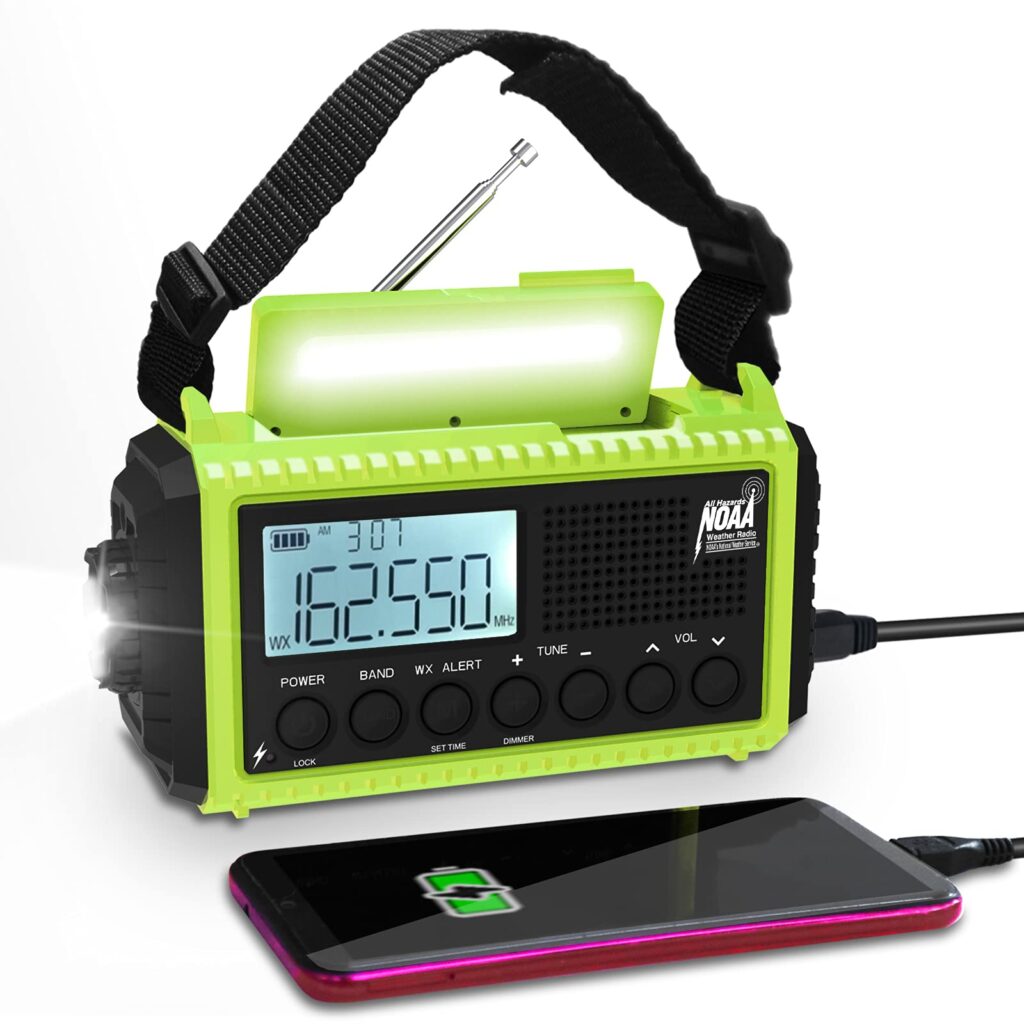
I’ve been through my share of storms, and having this radio by my side gives me the confidence that I’ll be in the know if any critical alerts pop up.
Pros
Cons
Navigating through uncertainty, especially during severe weather conditions, demands reliable equipment. My experience with the Raynic Emergency Weather Radio stands as a testament to its effectiveness. Its alert feature, which automatically scans for NOAA weather alerts, is invaluable. Just last week, an alert gave me ample time to secure my belongings and seek shelter before a thunderstorm hit.
During a recent camping trip, the large HD LCD proved its worth. I could see the frequency and battery level clearly, tuning into my favorite stations without any hassle. And when the night fell, I found the flashlight and reading lamp to be brighter than expected, illuminating my surroundings effectively.
Power can be a concern in remote locations, but this device’s versatile charging options, including solar and hand crank, mean that I’m almost always able to juice up the radio. The USB port came in handy to charge my smartphone, ensuring that I was able to reach out to my family even when the power grid was down. While not the lightest in my kit, its robust build provides a level of durability that’s comforting when facing the unpredictable.
TFTDOUP Emergency Radio
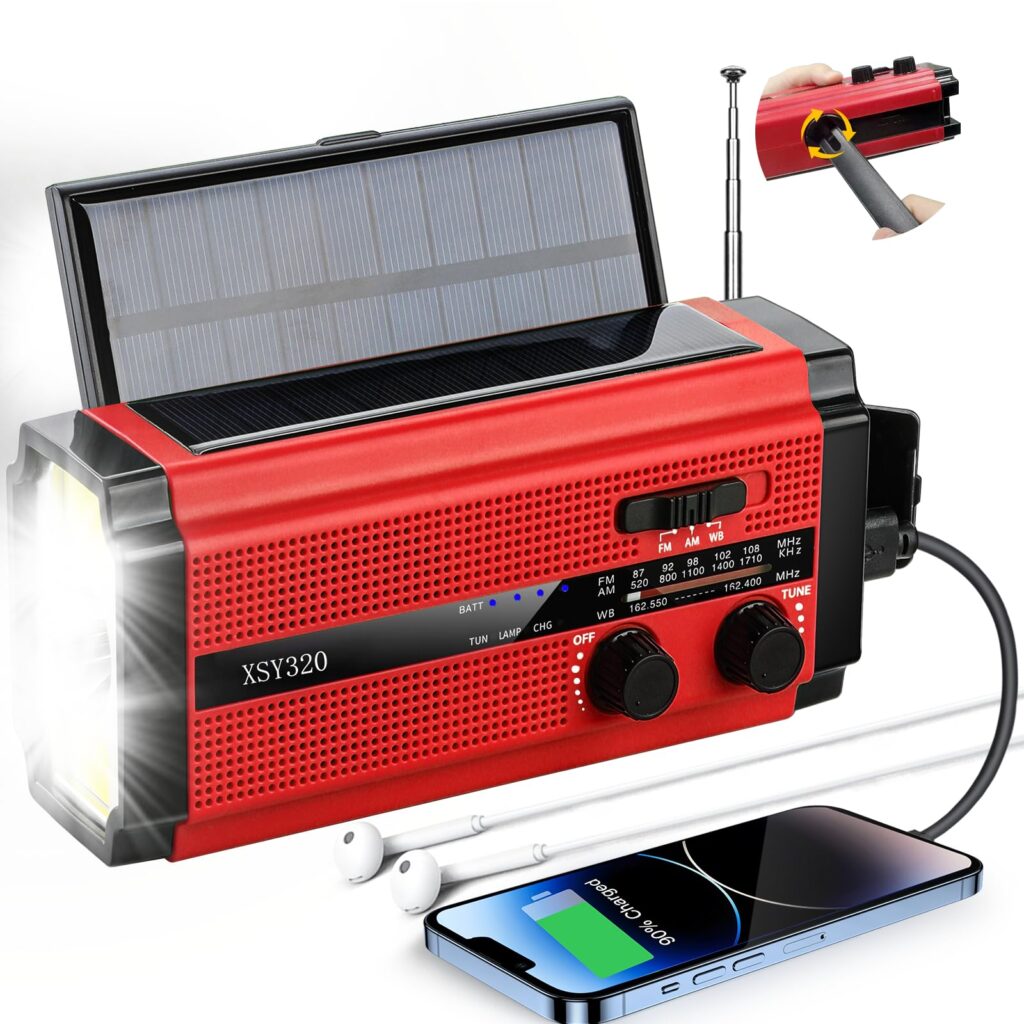
I can confidently recommend this emergency radio for its reliable features that give you peace of mind in any critical situation.
Pros
Cons
Upon the first use, I was struck by the durable feel of the radio. It’s reassuring to have robust equipment when preparing for the unknown. Charging this device was a breeze; the dual solar panels are a step up from the standard single panel, catching the sun’s rays more efficiently.
I found tuning into NOAA weather stations simple, and receiving updates on potential weather threats felt seamless. The sound quality is clear, which is crucial during times when every word counts. The hand crank doesn’t require much effort to use and the added USB-C port is a convenient, modern touch for charging the internal battery.
The integrated flashlight and reading lamp cast a bright, wide beam, making it easier to see during power outages, or when navigating the dark. It’s comforting to think that an SOS alarm is on hand should a dire situation arise.
In summary, TFTDOUP’s Emergency Radio is well-equipped to keep you safe and informed. Whether you’re enduring storm season or embarking on an outdoor adventure, it offers practicality and ease of use that make it an essential gear.
Yestiwc Weather Radio
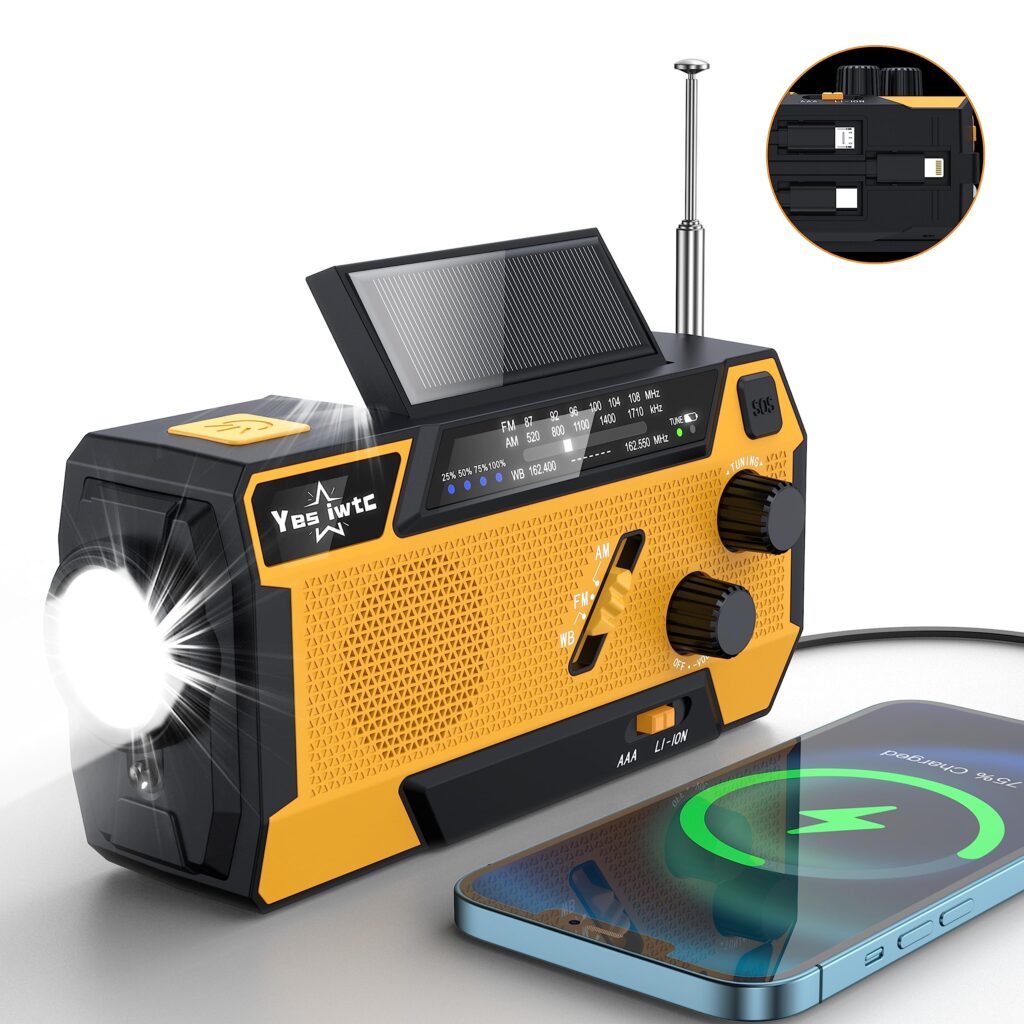
I can confidently say this radio has earned its place in my emergency kit for its reliability and versatile charging options.
Pros
Cons
Having recently added the Yestiwc 2000mAh Radio to my gear, its utility during power outages impressed me. The multiple charging options, including hand crank and solar, come in handy when there’s no electricity. Moreover, the built-in cables eliminate the need for carrying extra wires, which reduces clutter and ensures I’m always prepared to charge different devices.
During a night-time blackout, the radio’s flashlight with three brightness levels was a game-changer. The 6 LED reading lights were equally useful, making it easier to navigate the darkness. Being able to tune into NOAA broadcasts kept me updated with the latest weather alerts, which is reassuring when facing unpredictable storms.
Although I appreciate the solar charging feature, it’s not as robust as plugging in or using the hand crank. It’s a slow process and seems more of a last resort option. Also, while its compact design is excellent for portability, it also means the sound doesn’t carry as far as larger radios. And, for those less physically inclined, cranking for power might be a bit demanding. Despite these small drawbacks, the Yestiwc Weather Radio is a reliable companion in any emergency kit.
Buying Guide
Key Features to Consider
When selecting an emergency weather radio, it’s important for me to consider several key features that will ensure reliable performance when it’s needed most.
-
Multiple Power Sources: I look for a radio that offers various power options, such as hand crank, solar panel, battery, and if possible, a USB charging port. This ensures that I can keep the radio operational even when electricity is not available.
-
NOAA Alerts: The ability to receive National Oceanic and Atmospheric Administration (NOAA) alerts is crucial. I prefer a radio with an automatic alert feature that can warn me of severe conditions even if the unit is only in standby mode.
-
Signal Reception: A good emergency radio should have a telescopic antenna and the ability to receive multiple frequencies, including AM/FM and NOAA weather channels, to maintain a strong signal connection.
-
Durability and Portability: I check for a sturdy build that can withstand rough conditions. The radio should also be compact and lightweight enough for easy transportation and storage.
-
Additional Functions: Features such as a built-in flashlight, SOS alarm, and reading lamp can be highly beneficial during power outages or disasters.
Format for Comparison
To compare radios effectively, I use a simple table format:
| Feature | Description |
|---|---|
| Power Sources | List available power options. |
| NOAA Alerts | Note if the radio has an automatic alert feature. |
| Signal Reception | Check for AM/FM and NOAA channels, and assess the quality of the antenna. |
| Durability | Assess build quality and whether the radio is water-resistant or rugged. |
| Portability | Record size and weight, and the presence of a carrying handle or strap. |
| Additional Functions | List extra features like flashlights, alarms, and secondary functions. |
Through a careful assessment of these features and comparison, I can make a well-informed decision on the best emergency weather radio for my needs.
Frequently Asked Questions
I’ve compiled some key questions to clarify what to look for in top-tier emergency weather radios and their functionality, compared to other options on the market.
What features are crucial in a high-quality emergency weather radio?
A high-quality emergency weather radio should have NOAA certification, multiple charging methods, a long-lasting battery, a hand crank, solar panel, and a strong, clear signal reception. It is also beneficial to have extra features such as a flashlight, USB charging port for devices, and an SOS alarm.
How do weather radios differ from other types of emergency radios?
Weather radios are specialized for receiving NOAA alerts and weather updates, having a direct focus on meteorological events. Other emergency radios might be broader in functionality, offering AM/FM radio, access to a wider range of broadcast channels, but not necessarily dedicated weather alerts.
Which emergency radios are considered reliable by consumer reports?
Consumer reports often rate the Midland ER310 and American Red Cross FRX3 highly for reliability. These models are praised for their durable build, clear reception, multiple power sources, and additional features like flashlights and USB ports.
What are the advantages of military grade emergency radios?
Military grade emergency radios are built to more robust standards, often with superior impact and water resistance. They usually feature secure communication channels and are designed to perform in the most extreme conditions, ensuring reliable operation when it matters most.
Can emergency radios be dependable in all types of severe weather conditions, such as hurricanes?
Yes, emergency radios are designed to be dependable in severe weather including hurricanes. They are equipped with features like robust casings and NOAA weather alerts to maintain functionality and provide crucial information even in harsh conditions.
What are the benefits of owning an emergency radio made in the USA for home preparedness?
Owning a USA-made emergency radio for home preparedness ensures adherence to high manufacturing standards and easier access to customer service and warranty support. They often incorporate the latest technology and are readily available for updates or replacement parts.

